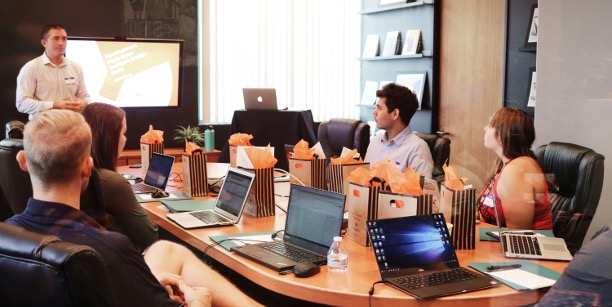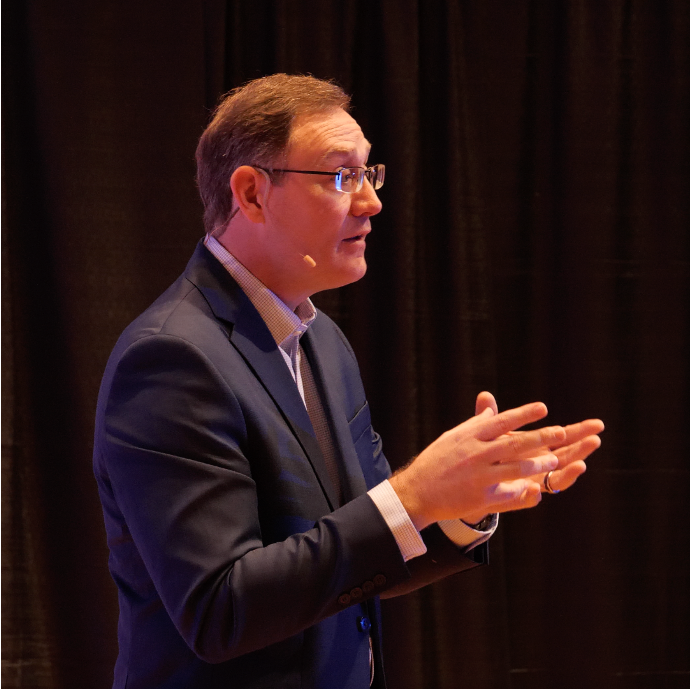Most meetings are relatively joyless experiences…
They become routine checklists and overlong discussions that end in a whimper.
But team meetings don’t have to be this way.
They can (and SHOULD) be culture-building experiences that inspire action, creativity, and growth. Your team gatherings are a prime opportunity to foster collaboration and engagement, especially if you rethink how they end.
(find a team meeting template that doesn’t suck explained in a previous blog!)
Regardless of your meeting agenda, the end of your meetings will inspire more productive ACTION if you take the time to clarify WHO is going to do WHAT and specifically by WHEN.
That is a simple and efficient way to end ANY meeting.
But – if you often feel that you didn’t invite as much contribution or creativity from your team as you might like – there are TWO unexpected ways to end a meeting that you could incorporate into your next in-person or virtual team gathering.
By intentionally engaging your team with two simple yet unexpected prompts, you’ll not only make meetings more meaningful but also encourage contributions that grow your team’s engagement and morale.

1 – ASK THEM to PUT TRUTH ON THE TABLE
End with “What Needs to Be Said That Hasn’t Been?”
Have you ever left a meeting only to realize there was an unresolved issue no one had the courage to bring up? You’re not alone. Many meetings suffer from a lack of openness, stifling the very feedback that could address challenges and improve outcomes.
Ending your meeting by inviting participants to “put truth on the table” with this simple question — “What needs to be said that hasn’t been said?” — changes that dynamic. It encourages transparency and gives team members permission to voice concerns, identify gaps, or spotlight issues that deserve attention.
Here’s how you can implement it effectively:
- In-Person Meetings: Provide team members with sticky notes or index cards. Ask them to jot down their thoughts anonymously and drop them in a collection box as they leave.
- Virtual Meetings: Encourage participants to email or private message their responses directly after the meeting.
This method removes the fear of judgment and promotes honest input, especially on difficult topics. As a leader, you’ll gain valuable insights into team sentiment and operational roadblocks that might otherwise go unnoticed.
The key is follow-through.
After collecting responses, address recurring themes or critical points during your next meeting or through follow-up communication.
When your team sees that their feedback is acted upon, trust deepens, and engagement grows.
By inviting candor, you’re not just ending a meeting — you’re laying the foundation for a stronger, more connected team that sees conflict as a safe opportunity to learn and grow.
2 – ASK THEM to SHARE IDEAS FOR IMPROVEMENT
Close with “Wouldn’t It Be Great If…”
Sometimes, the best ideas come from the people closest to the work.
Unfortunately, most meetings don’t create the space needed for innovative suggestions to surface. That’s why ending your gathering with the prompt “Wouldn’t it be great if…” can be a game-changer.
This question encourages team members to think beyond immediate tasks and challenges, focusing instead on opportunities for improvement and innovation. It’s an invitation to dream big and share ideas that could enhance the team’s workflow, culture, or results.
Here’s how to incorporate it seamlessly:
- In-Person Meetings: Distribute sticky notes or index cards and have attendees write down their ideas before leaving. Collect their responses to review later.
- Virtual Meetings: Ask participants to send their suggestions via email or a private message immediately following the session.
What makes this approach so impactful?
First, it shifts the meeting’s tone from reactive to proactive. Instead of simply discussing current challenges, you’re encouraging your team to look ahead and identify possibilities for growth.
Second, it empowers everyone — from the quietest participant to the most vocal leader — to contribute meaningfully.
Again, follow-up is crucial.
At your next meeting, share three of the most actionable or inspiring ideas and outline your plan for implementing at least one.
Show your team that their voices matter.
And reinforce a culture of collaboration and progress.
When you make this question a standard part of your meeting closure, you’ll notice a shift in energy and engagement. Teams that feel heard are teams that innovate and thrive.

The Importance of Follow-Up After the Meeting
No matter which prompt you use, your role as a leader doesn’t end when the meeting does. To maximize the value of these activities:
- Send a Summary Email: Highlight commitments made during the meeting, specifying who is responsible for what and by when.
- Thank Participants: Acknowledge their contributions and the feedback they provided.
- Take Visible Action: Follow through on at least one piece of feedback or suggestion and share the results.
By closing the loop, you’ll build a reputation as a leader who listens and acts — a quality that inspires loyalty and drives team performance.

Turn Your Meetings into Team-Building Opportunities
By closing meetings with these engagement-focused questions, you’re not just managing tasks — you’re nurturing resilience and creativity.
The more your team practices sharing and solving together, the more capable they become of tackling future challenges with confidence and pride.
Meetings don’t have to be boring obligations!
By ending with prompts like “What needs to be said that hasn’t been?” and “Wouldn’t it be great if…,” you transform your gatherings into opportunities for growth, innovation, and collaboration
They also become helpful in growing your awareness.
And you cannot improve issues that you are unaware of…
When you invite candor and creativity, follow up with clear actions, and celebrate progress, you’ll create a culture where meetings inspire instead of drain.
Effective Leaders know that a healthy culture pays dividends in productivity, morale, and collaboration.
If you’re ready to take your team’s engagement to the next level, Sean Glaze is an experienced team building speaker and facilitator that helps organizations build more connected and collaborative teams.
Reach out today to explore how Sean can make your next professional development day a memorable and impactful experience!
– – – – –
Sean Glaze is an experienced and interactive facilitator who helps organizations develop more effective leaders and build more positive and profitable workplace cultures.
leaders and build more positive and profitable workplace cultures.
Sean is the author of four books, The Unexpected Leader, Rapid Teamwork, The 10 Commandments of Winning Teammates, and Staying Coachable – each one an entertaining parable with powerful take-aways for team growth and leadership!
What issues are YOU dealing with that would disappear if you could build an exceptional team culture that inspired connection, accountability, and a team-first attitude?

